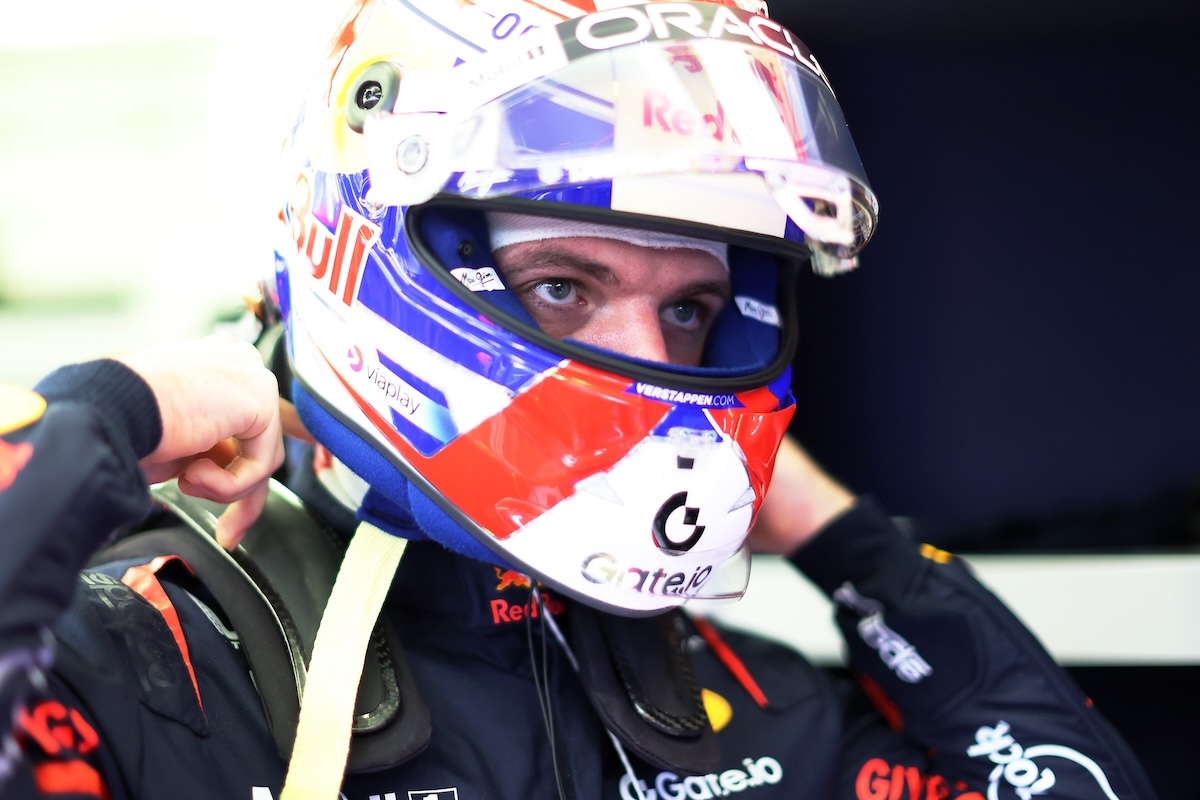Verstappen: Fatalist? The Huge McLaren Gap Explained
Editor’s Note: Verstappen's dominant performance and the significant gap to McLaren have been a hot topic today. This article delves into the reasons behind this disparity.
Why This Matters
Max Verstappen's current dominance in Formula 1 is undeniable. However, the sheer size of the gap separating Red Bull from McLaren, a team historically strong, is sparking intense debate. Understanding the factors contributing to this performance chasm is crucial for analyzing the future of the sport and the strategies employed by different teams. This article will explore the technical, strategic, and even psychological aspects impacting this significant difference, offering insights for both seasoned F1 fans and newcomers alike. We will examine Verstappen's perceived fatalistic approach to racing, McLaren's development challenges, and the overall competitive landscape.
Key Takeaways
| Factor | Impact on Verstappen's Dominance | Impact on McLaren's Performance |
|---|---|---|
| Red Bull's RB19 Performance | Significantly enhanced | Relatively less competitive |
| Driver Skill | Exceptional, consistent wins | Strong, but lacks Verstappen's edge |
| Strategic Decision Making | Optimized for maximum advantage | Room for improvement |
| Car Development | Continuous improvement cycle | Facing development hurdles |
Verstappen: The Unstoppable Force?
The sheer pace of Verstappen and the Red Bull RB19 is undeniable. His current performance isn't just about winning races; it's about dominating them. But is this dominance fueled by superior machinery alone, or is there a deeper, almost fatalistic element to his approach? Some analysts suggest Verstappen’s unwavering focus and calculated risk-taking contribute to his success, even in seemingly precarious situations. This "fatalistic" perspective, if it exists, allows him to push boundaries and extract maximum performance from himself and his car, regardless of the potential risks. His ability to maintain consistent speed and precision, even under pressure, is a testament to this approach.
Key Aspects of Verstappen's Success
- Exceptional car setup: The RB19's performance advantage is undeniable.
- Unwavering focus: Verstappen rarely falters under pressure.
- Calculated risk-taking: He pushes boundaries without recklessness.
- Technical understanding: His insight into car setup and race strategy is key.
Detailed Analysis of Verstappen's Driving Style
Verstappen's driving style is characterized by aggressive overtaking maneuvers, precision in high-speed corners, and an uncanny ability to manage tire degradation. His consistency is remarkable; he rarely makes mistakes, which allows him to capitalize on opportunities and minimize errors, even in challenging conditions.
The McLaren Struggle: Bridging the Gap
While McLaren boasts a talented driver lineup, the team faces significant challenges in closing the gap to Red Bull. The MCL60, though showing improvement, lacks the raw speed and overall performance of the RB19. This deficit stems from a confluence of factors, including aerodynamic inefficiencies and challenges in car development.
The MCL60's Shortcomings
- Aerodynamic limitations: The MCL60 struggles in high-speed corners.
- Development issues: McLaren has faced setbacks in developing crucial areas of the car.
- Strategic inconsistencies: Race strategy occasionally hinders the team's performance.
Further Analysis of McLaren's Challenges
McLaren's struggles highlight the complexities of Formula 1 development. Minor design flaws can have significant repercussions, and maintaining a competitive edge requires continuous innovation and adaptation. The team's struggle to address these weaknesses effectively underpins the considerable gap separating them from Red Bull.
People Also Ask (NLP-Friendly Answers)
Q1: What is the main reason for Verstappen's dominance?
A: Verstappen's dominance stems from a combination of a superior car (the RB19), his exceptional driving skills, and effective race strategies.
Q2: Why is the McLaren gap to Red Bull so significant?
A: McLaren faces challenges in car development, particularly concerning aerodynamic performance, leading to a substantial speed deficit compared to Red Bull.
Q3: How can McLaren improve its performance?
A: McLaren needs to focus on aerodynamic improvements, address development issues, and optimize race strategies to close the gap.
Q4: What are the key characteristics of Verstappen's driving style?
A: Verstappen is known for aggressive overtaking, precision at high speeds, and consistent execution.
Q5: Is Verstappen's success solely due to his car?
A: While the RB19 is a significant factor, Verstappen's exceptional skill and consistent performance are also crucial to his success.
Practical Tips for Understanding F1 Competitiveness
- Analyze car performance data: Look at lap times, tire wear, and other metrics to understand car strengths and weaknesses.
- Study driver performance: Track drivers’ consistency, overtaking maneuvers, and strategic decisions.
- Follow team development: Understand how teams address issues and innovate.
- Consider race strategies: Analyze pit stops, tire choices, and tactical decisions.
- Pay attention to track conditions: Understand how weather and track surfaces affect performance.
- Read expert analysis: Stay informed about insights from experienced commentators and analysts.
- Watch onboard footage: Observe how drivers handle different sections of the track.
- Compare team budgets and resources: Understand how funding affects development and performance.
Summary: Verstappen's dominance and the significant gap to McLaren highlight the intricate dynamics within Formula 1. While Red Bull's superior car plays a vital role, Verstappen's unique driving style and strategic acumen also contribute significantly. McLaren's struggle emphasizes the ongoing challenges of developing and maintaining a highly competitive race car.
Closing Message: The Verstappen-McLaren gap offers a compelling case study in the complexities of Formula 1. What aspects of team performance and driver skill do you believe are most critical for future success?
Call to Action: Share your thoughts on this analysis in the comments below! Subscribe to our newsletter for more in-depth Formula 1 analysis.
(Hreflang tags would be included here based on the language versions of the article.)

